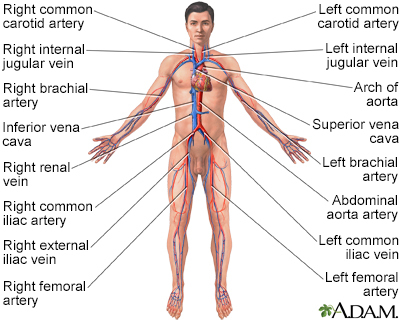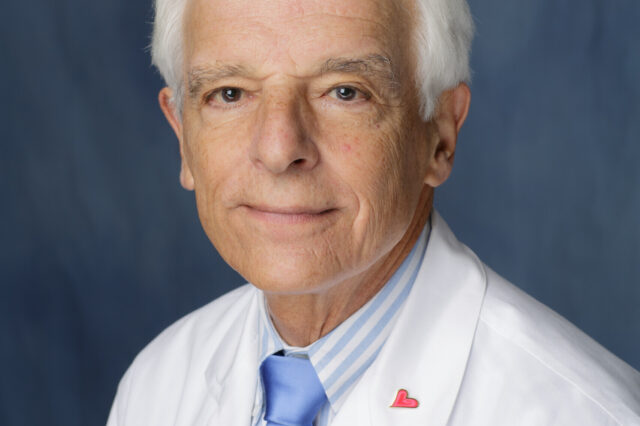UF Health Congenital Heart Center expertise aids both mother, daughter
In May 2001, Morgan Humphreys turned blue. Until that point, her mother said, Morgans birth had been uneventful. After the care team took her newborn to the…

Update your location to show providers, locations, and services closest to you.
An echocardiogram is a test that uses sound waves to create pictures of the heart. The picture and information it produces is more detailed than a standard x-ray image. An echocardiogram does not expose you to radiation.
Transthoracic echocardiogram (TTE); Echocardiogram - transthoracic; Doppler ultrasound of the heart; Surface echo
TRANSTHORACIC ECHOCARDIOGRAM (TTE)
TTE is the type of echocardiogram that most people will have.
An echocardiogram shows the heart while it is beating. It also shows the heart valves and other structures.
In some cases, your lungs, ribs, or body tissue may prevent the sound waves and echoes from providing a clear picture of heart function. If this is a problem, the health care provider may inject a small amount of liquid (contrast) through an IV to better see the inside of the heart.
Rarely, more invasive testing using special echocardiography probes may be needed.
TRANSESOPHAGEAL ECHOCARDIOGRAM (TEE)
For a TEE, the back of your throat is numbed and a long flexible but firm tube (called a "probe") which has a small ultrasound transducer at the end is inserted down your throat.
A heart doctor with special training will guide the scope down the esophagus and into the stomach. This method is used to get clearer echocardiographic images of your heart. The provider may use this test to look for signs of infection (endocarditis) blood clots (thrombi), or other abnormal structures or connections.
No special steps are needed before a TTE test. If you are having a TEE, you will not be able to eat or drink for several hours before the test.
During the test:
This test is done to evaluate the valves and chambers of the heart from the outside of your body. The echocardiogram can help detect:
Your provider may recommend a TEE if:
A normal echocardiogram reveals normal heart valves and chambers and normal heart wall movement.
An abnormal echocardiogram can mean many things. Some abnormalities are very minor and do not pose major risks. Other abnormalities are signs of serious heart disease. You will need more tests by a specialist in this case. It is very important to talk about the results of your echocardiogram with your provider.
There are no known risks from an external TTE test.
TEE is an invasive procedure. There is some risk associated with the test. These may include:
Talk with your provider about the risks associated with this test.
Abnormal results may indicate:
This test is used to evaluate and monitor many different heart conditions.

Otto CM. Echocardiography. In: Goldman L, Schafer AI, eds. Goldman-Cecil Medicine. 26th ed. Philadelphia, PA: Elsevier; 2020:chap 49.
Solomon SD, Wu JC, Gillam L, Bulwer B. Echocardiography. In: Zipes DP, Libby P, Bonow RO, Mann DL, Tomaselli GF, Braunwald E, eds. Braunwald's Heart Disease: A Textbook of Cardiovascular Medicine. 11th ed. Philadelphia, PA: Elsevier; 2019:chap 14.
In May 2001, Morgan Humphreys turned blue. Until that point, her mother said, Morgans birth had been uneventful. After the care team took her newborn to the…

May 18, 2020
As researchers continue to unravel the mysteries of COVID-19, they are increasingly realizing the disease caused by the novel coronavirus often involves more…
Division of Cardiology, +4 more
